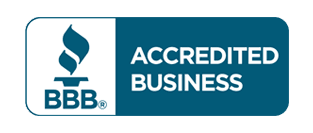Purchasing a home is a great investment. The closing, or settlement as it’s called in some states, is one of the most important parts of the process. This is when you legally commit to your mortgage loan. Here’s a rundown of items to help you know what to expect and how to prepare.
The kind of mortgage you choose has a big impact on how much you end up paying, including how much you’ll have to pay upfront, your monthly payment amount and the total cost of your loan over time. It also affects the level of risk you take on. Knowing what kind of loan is most appropriate for your situation prepares you for talking to lenders and getting the best deal. Most first-time buyers need to finance their home purchase, and a consultation with a mortgage lender is a crucial step in the process. Find out how much you can afford before you begin your home search.
Real estate agents and many online and print sources provide information on homes for sale. Educating yourself about the area in where you wish to buy can help you narrow your priorities and make an informed decision about which home to choose.
A proposal to buy a property includes both the price and terms. In a typical situation, you will complete an offer sheet that the real estate agent will present to the owner and the owner’s representative. The owner, in turn, may accept the offer, reject it or make a counter-offer.
Having the seller accept your offer is a great feeling. After your offer is accepted, you will sign the purchase agreement, which is an agreement containing all the details of the purchase. While not required, you may want an attorney to review.
The cost of financing your home purchase is usually greater than the price of the home itself (after interest, closing costs and taxes are added). After comparing loan options and selecting the best option for you, the next step is to tell the loan officer you want to proceed with that mortgage application. This is called expressing your intent to proceed. Lenders have to wait until you express your intent to proceed before they require you to pay an application fee, appraisal fee, or most other fees.
Most lenders require you to pay a year of premiums up front for homeowner’s or property insurance. If your loan includes an escrow/impound account, the account will be set up for you to make monthly payments toward your future taxes and insurance on the property. Don’t forget to make the smart choice and purchase an owner’s title insurance policy and protect your financial investment. For a one-time fee, an owner’s title insurance policy provides coverage for as long as you own your home.
Once you’ve decided to move forward with the purchase of your home and have funding in place, you are ready to shop for the closing agent who gathers all the legal documents, closes the loan and handles the money involved in your purchase. In most of the country, a title or settlement agent handles your closing. In other states, particularly states in the West, the person is called an escrow agent. In other states, particularly in the Northeast and South, an attorney may be required. During the closing, or settlement as it may be called in your area, you will sign many documents. Some key documents that you will sign include: Closing Disclosure: This form contains the terms and costs of your transaction. By law, your lender must provide the Closing Disclosure to you three days before your closing. Promissory note: This document is your promise to repay the loan (mortgage) to your lender. The note provides details regarding your loan, including the amount you owe, the interest rate of the mortgage loan, the dates when the payments are to be made, the length of time for repayment and the where the payments are to be sent. The note also explains the consequences of failing to make your monthly mortgage payments. Deed of trust: This document, which may also be called a Security Instrument or Mortgage, transfers legal ownership of the property with the condition that the lender may foreclose on your home if you fail to repay your mortgage. This document restates the basic information included in the Promissory Note, as well as explains your responsibilities and rights as a borrower.
13750 Crosstown Drive NW,
Suite 300,
Andover, MN 55304
Phone. 763-795-9106
Email. docs@conciergetitle.com



